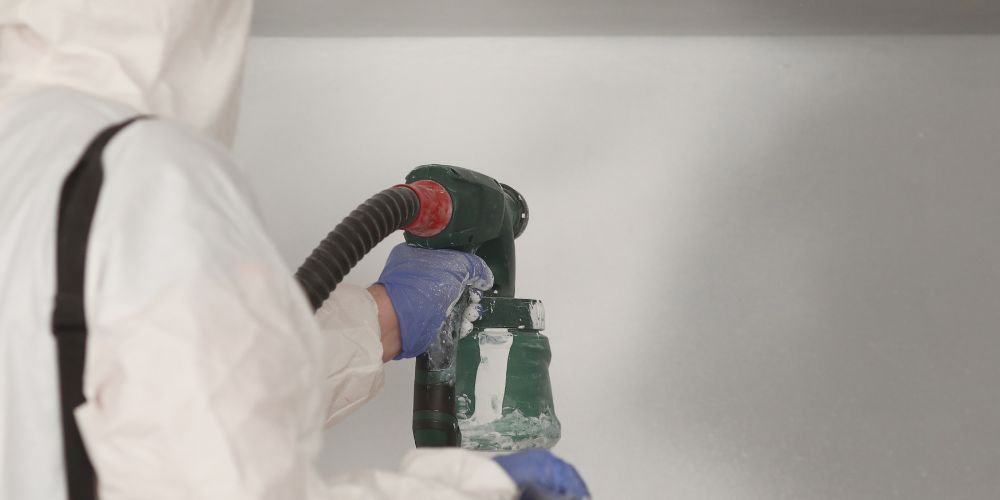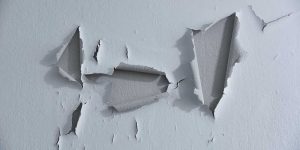Ready to give your room a makeover? Say goodbye to tedious brushes and rollers and say hello to paint sprayers!
Unlike traditional brushes or rollers, an indoor paint sprayer uses air pressure to paint surfaces. This leaves an even and smooth finish at all times.
In this guide, we’ll walk you through everything you need to know about using an indoor paint sprayer and why it’s time to make the switch!
Advantages of Using a Paint Sprayer
- Smooth and Even Finish. Traditional brushes and rollers might leave streaks or uneven patches, but a paint sprayer for walls ensures uniform, sleek coverage.
- Time Efficiency. Home paint sprayers cover larger surfaces per spray compared to rollers, making them a better choice for efficient project completion.
- Cost-Effectiveness. Paint sprayers use minimal paint for each project, reducing waste and ensuring you have extra paint for future touch-ups or projects.
Choosing the Right Paint Sprayer
There are various types of paint sprayers available, including airless, HVLP (High Volume Low Pressure), and handheld models. Each type has its own strengths, so it’s essential to choose one that suits your project needs and size.
3 Types of Paint Sprayers
- Airless paint sprayers. Suitable for thick paints and large projects, but can be difficult to control.
- Pneumatic paint sprayers. Suitable for delicate work and fine finishes. They are not as powerful as airless sprayers but are easier to control.
- High-volume low-pressure (HVLP) sprayers. These use a large volume of air at low pressure to atomize paint. They provide a good finish without the high pressure or overspray.
Consideration Factors
Choosing the right paint sprayer can make a huge difference in the ease and quality of your project.
Here are three key things to consider:
- Project demands. Airless sprayers are suitable for larger projects that use thick paints. In contrast, pneumatic and HVLP house paint sprayers are best for smaller projects and thinner paint.
- Desired finish. When it comes to finishing, airless sprayers deliver a consistent coat for large spaces. Whereas, pneumatic and HVLP sprayers are better for precision and control.
- Skill level & comfort. HVLP home paint sprayers are best for beginners. While pneumatic and airless sprayers require more experience.
Preparing the Room
Preparation is as important as the actual thing. Let’s tap into how to prep your room for a spray paint session:
- Clearing the Space. Before you start spraying, clear the room of furniture and cover anything you can’t move. This gives you more space and prevents stains.
- Covering Furniture and Floors. Use drop cloths or plastic sheets to cover furniture and floors to protect surfaces from any accidental splatters.
- Patching and Sanding. Patch up holes and sand the surfaces to create a smooth canvas for your new paint.
Selecting the Right Paint
Check the paint label for compatibility with paint sprayers or consult with a paint professional. There are a lot of different types of wall paint but not all work well with sprayers.
Here’s a quick list of compatible paints for house paint sprayers.
- Most water-based paints (ie. Latex paints, acrylic paints, and water-based primers)
- Oil-based paints
- Lacquer and enamel
- Stains
- High-heat paint
Safety Measures
Home renovation should be a fun experience. Thus, you have to make sure to stay informed of the different safety measures to protect yourself from paint fumes and other issues.
Firstly, ensure you have the right protective gear for the job. This includes:
- Respirator
- Safety glasses or goggles
- Gloves
- Coveralls or disposable suit
- Head cover (eg. bandana or hat)
Second, make sure to work in a well-ventilated area to disperse any paint fumes. Move out as much furniture as possible and open windows and doors to ensure proper airflow.
Techniques for Efficient Painting
- Proper Distance and Angle. Maintain a consistent distance and angle between the sprayer and the surface for even coverage.
- Overlapping Strokes. To avoid uneven patches, use overlapping strokes while spraying.
- Maintaining a Steady Pace. Keep a steady pace to prevent over-spraying or uneven application.
Clean-up Process
After completing your project, clean the paint sprayer thoroughly. Follow the manufacturer’s instructions for disassembling and cleaning each part to maintain the sprayer’s longevity.
Also, dispose of paint residues responsibly. Check local regulations for proper disposal methods, as some areas may have specific guidelines for paint disposal.
Frequently Asked Questions (FAQs)
How long does it take to paint a room with a sprayer?
The time depends on the size of the room and your experience. For reference, a small room (10×10 ft) could only take 1- 2 hours.
Can I use a paint sprayer for ceilings?
Yes. Just remember to adjust the settings for optimal coverage.
Is it necessary to thin the paint before spraying?
Yes. This is to ensure that the paint flows smoothly through the nozzle.
What safety precautions should I take when using a paint sprayer?
Wear protective gear, work in a well-ventilated area, and follow all safety guidelines provided with the sprayer.
Can beginners use paint sprayers?
Absolutely! While there is a learning curve, many paint sprayers are designed for user-friendly operation.
Conclusion
From choosing the right sprayer to efficient techniques and a seamless clean-up process, painting has never been more straightforward. See your home come to life with a paint sprayer for walls and other furniture
Looking for a home painting expert? Get in touch with JDS Home Solutions today.











